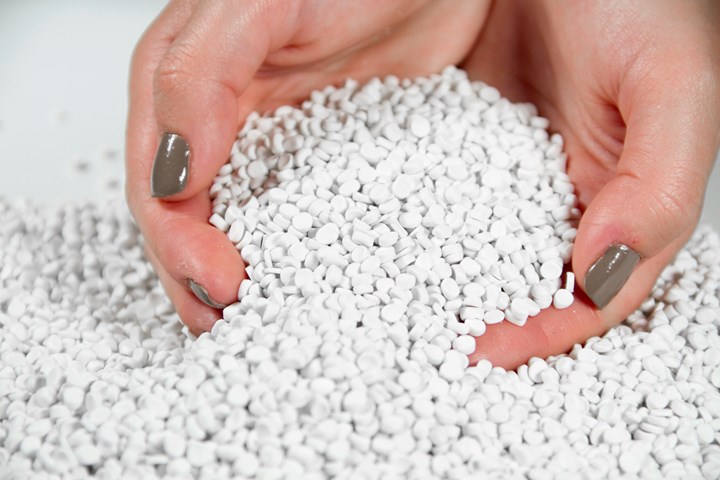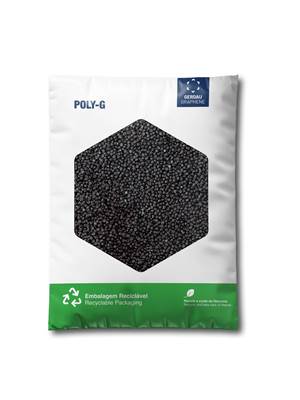Chemours Leads Remove2Reclaim Project to Advance Plastic Circularity
Project aims to develop commercial-scale detection and extraction technologies that enable the removal and recovery of TiO2 and polymers for reuse.

A new initiative, dubbed Remove2Reclaim which has the potential to drive significant environmental benefits, eliminating waste and reducing the amount of energy used in manufacturing, by enabling circularity across a much wider range of applications is being led by The Chemours Company, a global chemistry company with leading market positions in titanium dioxide (TiO2) technologies, as well as thermal & specialized solutions, and advanced performance materials.
The three-year recycling research product, in collaboration with industry, academic, and government experts, specifically aims to develop commercial-scale, efficient and cost-effective detection and extraction technologies that enable the removal and recovery of TiO2 and polymers for reuse. Current commercial scale recycling technologies do not allow polymers and additives to be effectively removed and separated, limiting the potential applications and overall quality of products made with recycled plastic.
According to Chemours EMEA technical marketing manager Steven De Backer, the research team hopes to help crack the code on effective plastic recycling, achieving a new level of circularity for the industry. The goal is to separate the TiO2 and polymers from the finished, recycled plastic product by dissolution without using harsh chemicals in the process. Ideally, the recovered materials will be reused in high-quality applications without sacrificing quality or performance.
Window profiles in direct contact with UV light, styrene-based engineering polymers, and many other plastic materials that require high-quality TiO2 are all potential applications to put this reclaimed TiO2 to work. By focusing first on high-quality applications, the project hopes to also create a process that’s subsequently applicable to all plastic materials, compounding its potential impact on the sustainability of our planet.
“This initiative has the potential to reclaim thousands of tons of TiO2 from different end-of-life streams, reducing raw material demands, and creating a new TiO2 supply stream for our customers. We’re honored to lead this project in collaboration with a team of experts from across the value chain to pursue a common goal that benefits our shared planet.”
In the project’s first year, research partners have developed a sorting mechanism to effectively identify plastic wastes that contain TiO2 and determined innovative solvent-based extraction routes to remove TiO2 from different polymer matrices. Other project milestones include developing methods and equipment to detect TiO2 in specific polymer matrices, recovering TiO2 from the polymer by dissolution route, and eventually reusing the TiO2 and polymer in new products. Here are the overall expected benefits:
â–ª With the potential to recover such a high volume of TiO2 from existing materials, this initiative could significantly decrease the need to manufacture new TiO2. Doing so would meaningfully reduce the overall energy used and waste created in TiO2 manufacturing for decades to come.
â–ª In addition to using less energy in manufacturing, extracting and recovering TiO2 from existing plastic products would also significantly reduce ore and other mineral demand for TiO2 production. This would limit the need for and environmental impact of mining, preserving raw materials for future generations.
â–ª TiO2 recovery from existing materials would also provide a new TiO2 supply during high-demand cycles. With supply chain disruptions increasing in frequency and severity around the globe – from COVID-19 related delays, shipping logistics issues, and natural disasters – secure supply is more valuable than ever.
The Remove2Reclaim project (HBC.2020.2464) kicked off in September 2020 with the support of Catalisti, the spearhead cluster for the chemical and plastics industry in Flanders, Belgium. It includes a collaboration of the public and private sectors, including Chemours as the project coordinator, Ineos Styrolution, Lybover, Deceuninck, Matco Plastics, Centexbel, VITO, Ghent University, and KU Leuven. The project also received funding from the Flanders Innovation and Entrepreneurship Agency VLAIO.
Related Content
Graphene-Enhanced Stretch Film Billed as 'World First'
Thinner, stronger films to be commercialized by Brazil’s Packseven in August.
Read MoreMasterbatches Reduce Gloss in PLA and PETG 3D Printed Products
Insight Polymers & Compounding’s two low-gloss additive masterbatches shown to boost appearance of 3D printed objects.
Read MoreSI Group Gets FDA Approval Extension for Weston 705 & 705T
SI’s phosphite antioxidants get ‘green light’ for use in PET food-contact packaging
Read MoreNon-PFAS Mold Release for High-Temperature Polymers
Avient’s Evoluscend is designed to boost manufacturing efficiency.
Read MoreRead Next
Lead the Conversation, Change the Conversation
Coverage of single-use plastics can be both misleading and demoralizing. Here are 10 tips for changing the perception of the plastics industry at your company and in your community.
Read MoreSee Recyclers Close the Loop on Trade Show Production Scrap at NPE2024
A collaboration between show organizer PLASTICS, recycler CPR and size reduction experts WEIMA and Conair recovered and recycled all production scrap at NPE2024.
Read More










